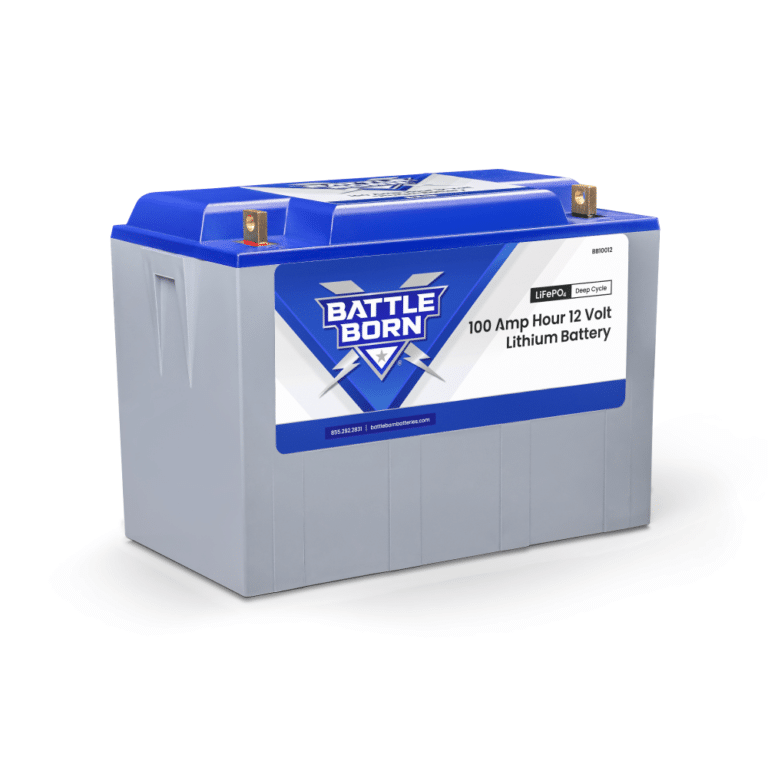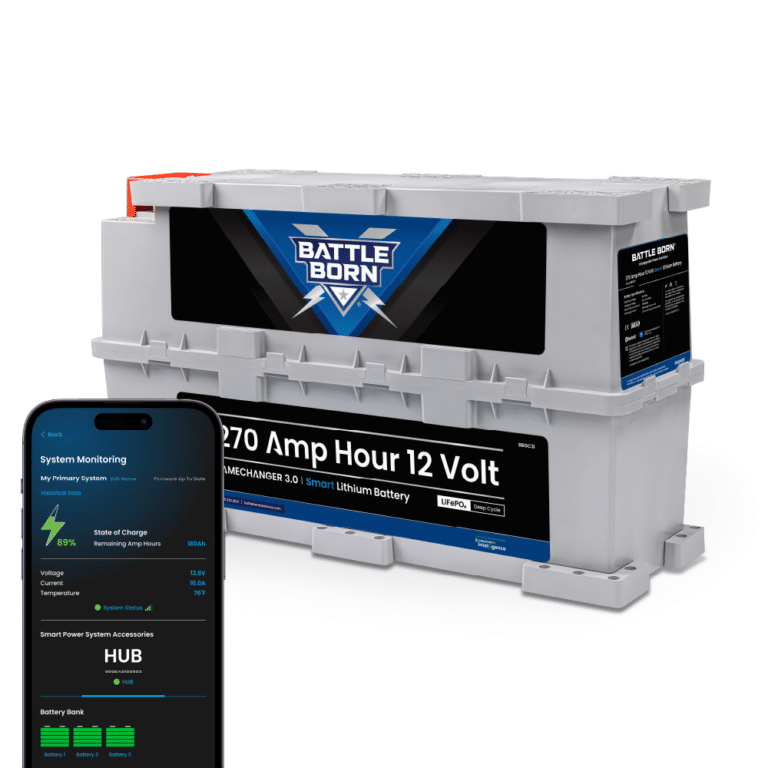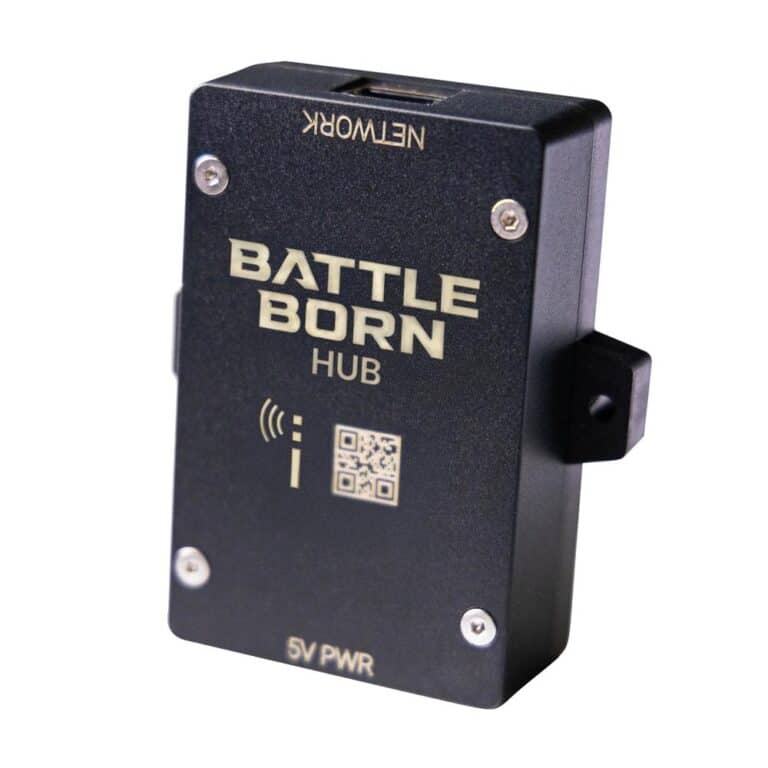
MENUMENU
TALK TO AN EXPERT
Special Hours: 7AM – 6PM PST
TALK TO AN EXPERT
Special Hours: 7AM – 6PM PST
Lithium-ion batteries keep critical systems operational, whether you’re using them in an RV or as a backup for power. And when these batteries are operational, the last thing you want is a safety hazard. That’s why investing in a battery management system (BMS) is important.
Lithium-ion batteries can last for years, depending on storage and use conditions. But with a BMS to protect them, they can last even longer. The battery management system ensures they operate at an optimal charge and temperature, reducing the risk of thermal stress, overcharging, or over-discharging.
Let’s find out what exactly a BMS is and how it works its magic. In this guide, we’ll dig into the fundamentals so you can make a wise investment.
Before we get into the details about management, first let’s first outline what deep-cycle batteries are and why you need them. These batteries withstand deep discharge and recharge cycles without sacrificing performance or longevity. They’re an excellent choice if you need steady, reliable power over long periods of time. Deep-cycle batteries are ideal for RVs, boats, renewable energy systems, and off-grid setups.
Lithium-ion batteries typically have a longer cycle life compared to their lead-acid counterparts. They can withstand a larger number of charge-discharge cycles, and provide dependable power when you need it the most—say, on a cross-country road trip or when sailing the high seas.
But lithium-ion batteries are also expensive—so you need a system that both protects your investment and keeps your batteries safe. A BMS ensures your batteries operate safely, efficiently, and reliably.
Specifically, it monitors key parameters of your battery—voltage, current, temperature, and state of charge—and takes proactive measures to prevent major issues. These can be anything from overcharging to a thermal runaway, which can be dangerous. In essence, a BMS is your first line of defense against battery-related mishaps.
The specific components vary depending on the system’s design and application. However, most battery management systems consist of several key elements:
As we’ve mentioned, the primary function of the BMS is to protect battery cells from damage caused by overcharging or over-discharging. But a great BMS can offer more. For instance, it can calculate the remaining charge and monitor the battery’s temperature, health, and safety by checking for loose connections and internal shorts.
Look for these features when investing in a battery management system:
This is one of the most important functions of a BMS. Changes in voltage can significantly reduce a battery’s life.
The BMS circuit is connected to each individual cell within the battery pack. It samples the voltage of each cell and compares it against predefined thresholds to ensure it remains within safe operating limits. When a cell voltage exceeds or falls below the specified thresholds, the BMS triggers protective measures to prevent damage to the battery pack.
In addition, the battery management system can change the power flow to or from the battery pack to bring the voltage back to normal. It also shuts down the battery as a last resort to protect both the cells and users.
Temperature is yet another critical aspect that has significant implications on battery life. A high temperature can cause thermal runaway. This is a chain reaction where escalating temperatures lead to cell failure. It’s a big risk for battery safety.
Temperature sensors are strategically placed within the battery pack to monitor the temperature of individual cells. These sensors continuously measure temperature variations in real time and compare them to predefined thresholds. If the temperature emerges outside these limits, the BMS will shut down the battery as a whole to protect it and the system.

The state of charge (SOC) refers to the amount of electrical energy stored in the battery at a given time. Put simply, SOC indicates how much charge is left in the battery relative to its full capacity.
There’s no direct way to measure the state of charge, although you can use the battery voltage as a proxy. The most accurate way to monitor the what is coming in and out of your batteries, as well as determine the SOC, is to utilize a shunt-based battery monitoring system.
Overcharge occurs when a battery is charged beyond its safe voltage limits. This can lead to overheating and gas generation, and it can also ruin the chemistry. A battery management system monitors the voltage of individual cells. If the cell voltage is increasing, it will shut down the battery until the user adjusts the charging voltage.
Over-discharge can happen if a battery is exposed to a high electric load. Of course, batteries undergo a gradual discharge over time, even when not in use. Extreme temperatures and age factors can also create a rapid discharge, leading to cell damage and capacity loss. The BMS ensures equal charging and discharging through cell balancing.
Cell balancing is a crucial function to maintain battery life. Several factors can cause a voltage imbalance, such as variations in cell chemistry or unequal aging effects. These imbalances can create unequal charging, which degrades battery performance and shortens its lifespan.
The battery management system ensures uniform charge distribution among the cells to optimize performance. It balances the cells either passively. Passive balancing uses simple resistance to discharge overcharged cells until they match other cells.

A single fault in a high-voltage battery can potentially expose you to electrical shock. But the battery management system prevents this by isolating the faulty circuit. It monitors a wide range of parameters—cell voltages, temperatures, currents, and internal resistance—to detect and isolate anomalies.
Battery management systems can be installed internally or externally. Let’s explore the pros and cons of each.
An internal BMS is integrated directly into the battery pack itself. This means the BMS is housed within the battery casing, where it seamlessly monitors the cells and manages their performance in real time.
Note: Battle Born Batteries have an internal BMS that monitors each individual cell in the battery pack. It calculates how much current can safely go in and come out without damaging the battery. Our internal BMS ensures the batteries always operate within a safe range. If unsafe operating conditions are detected, the BMS shuts down the battery.
An external BMS is a standalone unit that’s separate from the battery pack. It connects to the battery cells via wiring harnesses to monitor and manage performance. An external BMS is commonly used in larger battery systems and custom setups.
Using a battery without a management system can be dangerous. Without it, your battery has no protection against overcharging or overheating. A BMS is also necessary for continuous monitoring. So, while it may seem convenient to skip the BMS, it might actually cost you more in the long run.

There are several options and configurations available for battery management systems. These tips and guidelines can help you choose and use a BMS effectively. First, understand the specific requirements of your batteries. For example, if you have a lead-acid battery, you may not need a BMS. But a BMS is a must for lithium-ion batteries.
A good BMS should be able to accurately monitor voltage, keep the temperature under control, and protect against overcharging and over-discharging. Remember, low temperatures can also damage battery chemistry. So, a BMS should have a low-temperature cut-off to prevent the battery from being charged or discharged when it gets too cold.
Look for features that align with your battery needs and are compatible with your battery’s voltage levels. If your batteries demand constant charging and discharging cycles and reliable power delivery, you’ll need a robust BMS. That is, one designed to handle maximum voltage and current.
A BMS is a costly investment, so choose battery management systems from reputable manufacturers with a proven track record of safety. If you’re buying an external BMS, consider professional help for installation. An improper installation can lead to inaccurate readings. It can also compromise safety and battery performance.
Finally, some battery management systems can connect remotely with mobile or Bluetooth. This is helpful if you have intensive battery usage that needs constant monitoring.
Don’t operate a lithium-ion battery without a battery management system. It’s a sure fail-safe against battery mishaps that can be dangerous. But an external BMS can be costly. Why not choose a built-in BMS that comes with no additional cost?
Battle Born Batteries power RVs, vans, boats, and even off-grid solar setups across the world. We have a range of LiFePO4 batteries with a built-in BMS that are guaranteed to give you superior and reliable performance. What’s more, our batteries are lightweight, durable, safe, and easy to install and maintain. Added extras include free shipping, a financing option, a 10-year warranty, and technical support.
It’s time to make the shift from noisy generators to quiet batteries. Upgrade your power systems with Battle Born Batteries. Contact us today to learn more.
Shop Best Sellers








Ask a technical specialist now at 855.292.2831
Stay in the Know
One thought on “Understanding Battery Management Systems (BMS): A Comprehensive Guide”
What an outstanding work! It is a delight to read your insightful analysis presented in an interesting way. This article taught me a lot, and I will be using it again and again. Your time and knowledge are much appreciated.